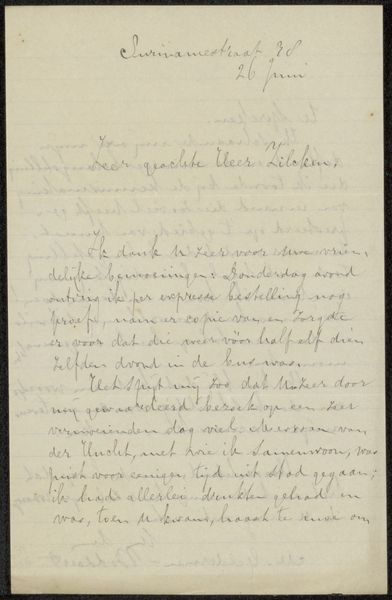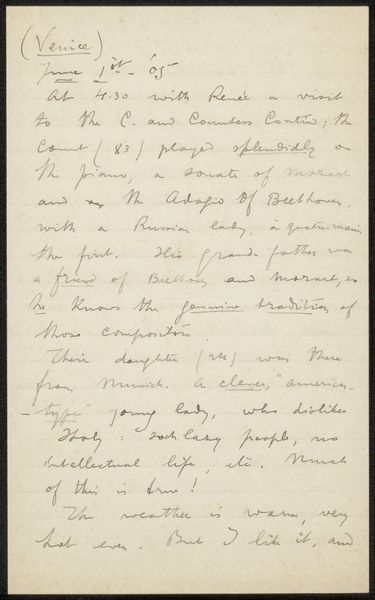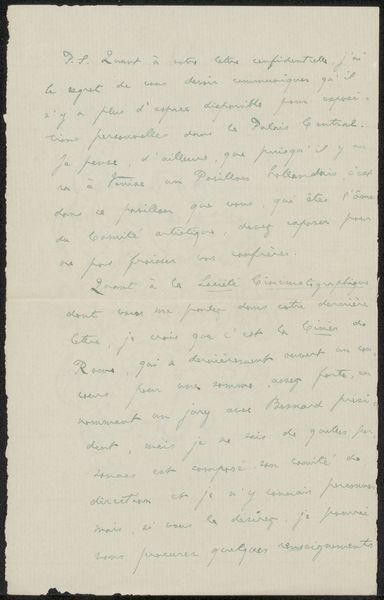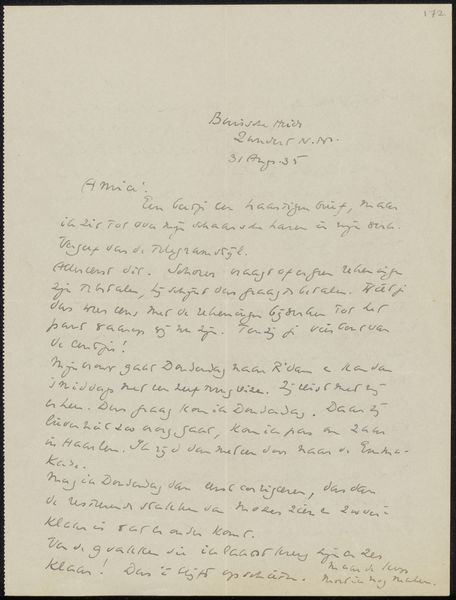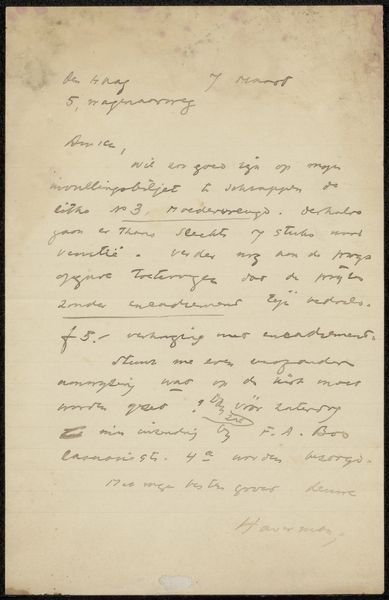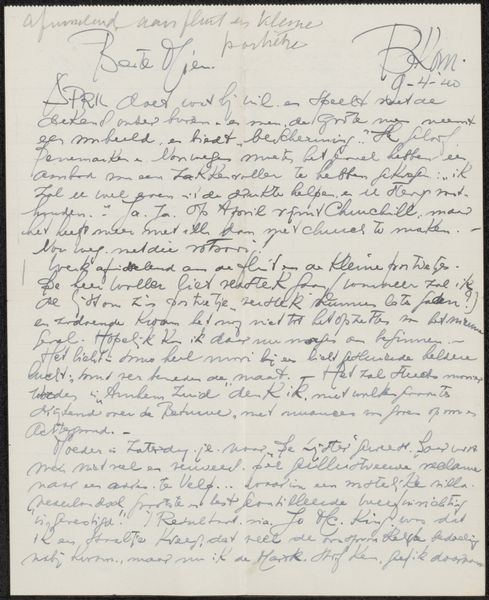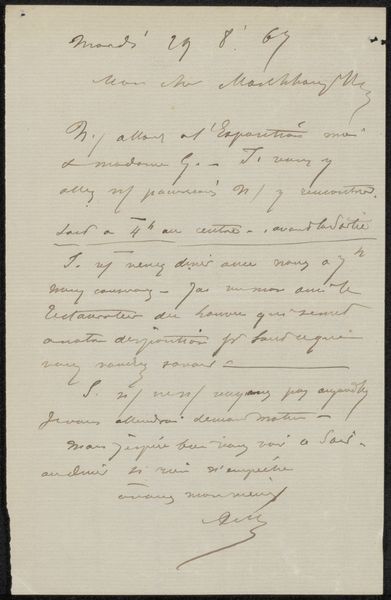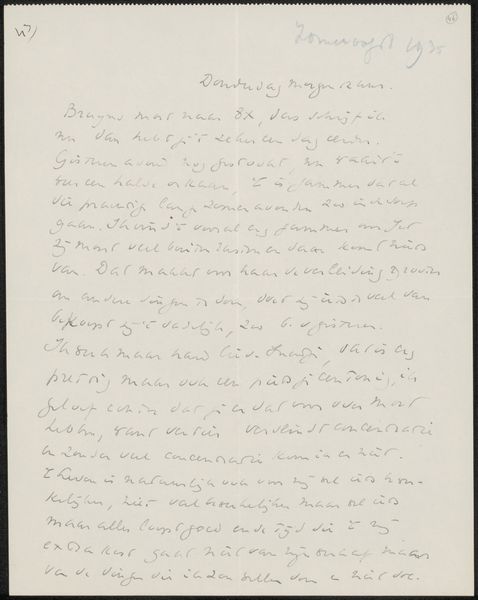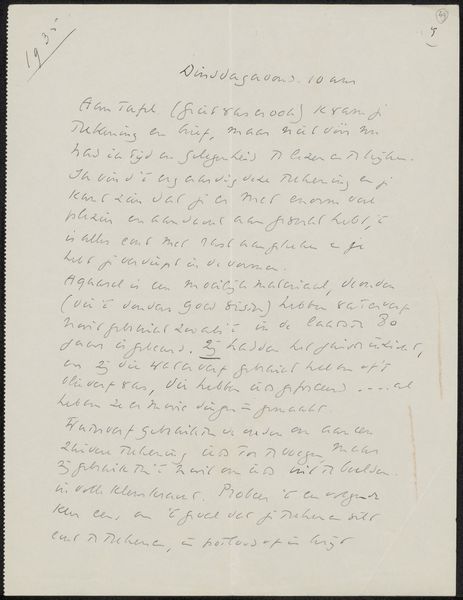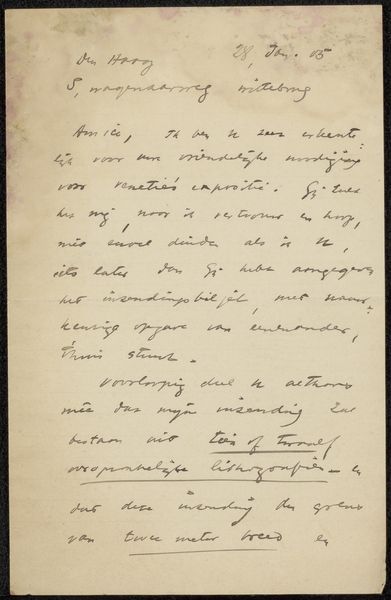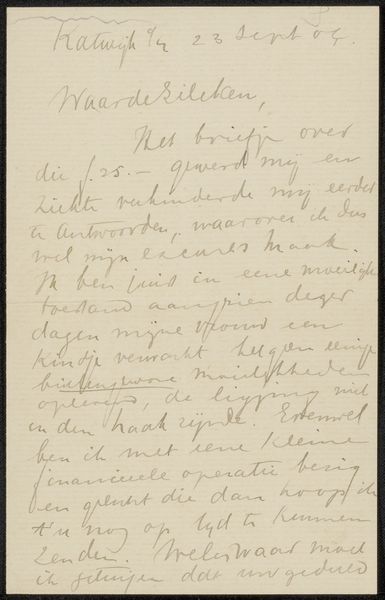
drawing, ink, pen
#
pen and ink
#
portrait
#
drawing
#
hand drawn type
#
ink
#
pen
#
calligraphy
Copyright: Rijks Museum: Open Domain
Editor: This is "Brief aan Henriette Wilhelmina van Baak" by Philip Zilcken, dating from around 1867 to 1930. It's a pen and ink drawing, and the calligraphy is just beautiful. It feels so personal, like a peek into a private conversation. What do you see in this piece? Curator: This letter, beyond its aesthetic appeal, speaks volumes about the societal constraints and power dynamics of the time. Zilcken, likely a man, addresses Henriette, a woman, with a tone of... what? Is it remorse, explanation, perhaps even a justification? What might have been the nature of their relationship? Were there societal expectations placed upon them that dictated how they could interact, forcing the language into these complex calligraphic shapes? Editor: So you're saying the words themselves might not be the whole story? Curator: Precisely. The choice to communicate via letter, the style of writing, the implied social hierarchy – all these elements are part of the artwork's meaning. Think about who had access to education, to the leisure to write and receive letters. What agency did Henriette truly possess within that exchange? How might feminist theory help us interpret this power imbalance inscribed into the artwork? Editor: I hadn’t considered that angle. I was just focused on the visual aspect of the drawing. Curator: The visual is inseparable from the social and political context. This letter serves as a potent reminder of the embedded histories and often unequal social conditions that framed even the most intimate exchanges of the time. Understanding that unlocks a deeper understanding. Editor: That gives me a lot to think about – looking beyond the surface and thinking about the broader implications. Curator: Exactly! And by interrogating those implications, we can understand this letter and similar works of art far more thoroughly.
Comments
No comments
Be the first to comment and join the conversation on the ultimate creative platform.
